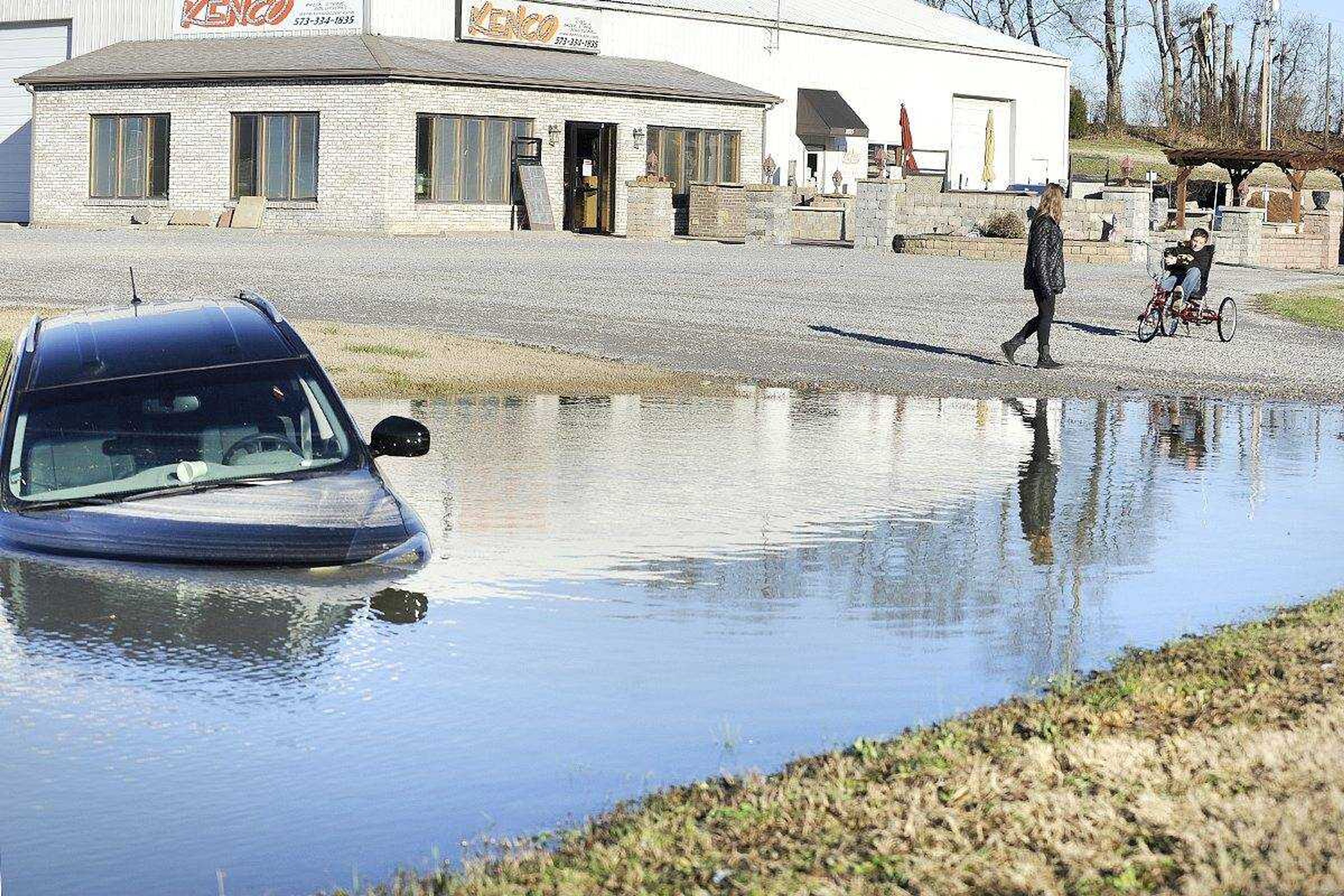A perilous and watery drive on Highway 177
We live in a home on a hill in a rural subdivision of Cape Girardeau. About two or three times in the last 10 years one of the exits from the subdivision was blocked by the rising Mississippi river flooding. In the first week of 2016 both of the exits were eventually blocked by historic flooding...
We live in a home on a hill in a rural subdivision of Cape Girardeau. About two or three times in the last 10 years one of the exits from the subdivision was blocked by the rising Mississippi river flooding.
In the first week of 2016 both of the exits were eventually blocked by historic flooding.
When I drove home last Thursday p.m. all was clear on exit two and the crest was not forecast until Saturday a.m.
Friday morning I happily left my house for work (as your age goes up ... your IQ goes down).
Highway 177 was clear at exit two but what appeared to be about 2 inches of water covered about 12 feet from Highway 177.

With no concern (although many warnings about driving through water had been issued) I bottomed out and the car was stuck.
Slowly the water started into the floor and the current pushed (and floated) the car into deeper water. I tried to open the car door, but the door wouldn't open.
Now the front of the car (the heaviest part on the car because of the engine weight) nosed down and the water was up to my knees (interesting).
I hit the window button and miraculously the driver window opened (the electrical system probably shouldn't have worked but it did).
I crawled (climbed) out the window as the water reached to my waist in the car. I then walked 1 1/2 miles basically uphill to our home, my bad back and two hip replacements protesting all the way ... Safe but marooned in my home for three more days because of the rising flood water.
I share this with you to call your attention to what you should do (other than don't drive through water) in case you get caught in the same predicament and suggest you act quicker than I did.
1. Google "Escaping from a Flooding Car."
2. Google "Submerged Vehicles." Studies have shown that the electric power may stay on inside the vehicle for as much as an hour. HOWEVER, once the window motors and/or switches get soaked, they will generally short out and the windows and electric door locks will no longer operate. This can sometimes happen in less than four minutes.
3. You can flood out in less than 6 inches of water (more or less according to the vehicle).
4. It only takes one or two feet of water to float a vehicle off its tires.
5. Open your window immediately or crack it partially open as it is almost impossible to break it out when closed unless you have a pointed object or a glass breaking tool designed for that.
6. When the front goes down the vehicle can lose 1,500 pounds of buoyant weight and become easier for the current (if any) to move the car.
NOTE: Each year within the United States there are approximately 1,200 to 1,500 submerged vehicle incidents resulting in 400 to 600 deaths.
Gary Rust is chairman of the board of Rust Communications, which owns the Southeast Missourian, as well as a member of the editorial board.
Connect with the Southeast Missourian Newsroom:
For corrections to this story or other insights for the editor, click here. To submit a letter to the editor, click here. To learn about the Southeast Missourian’s AI Policy, click here.











